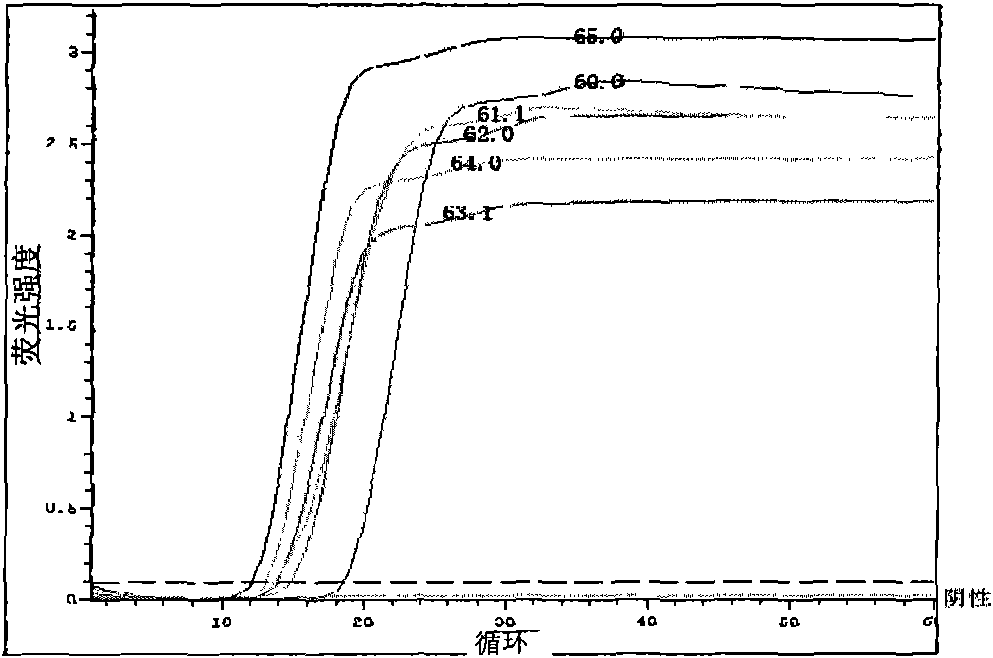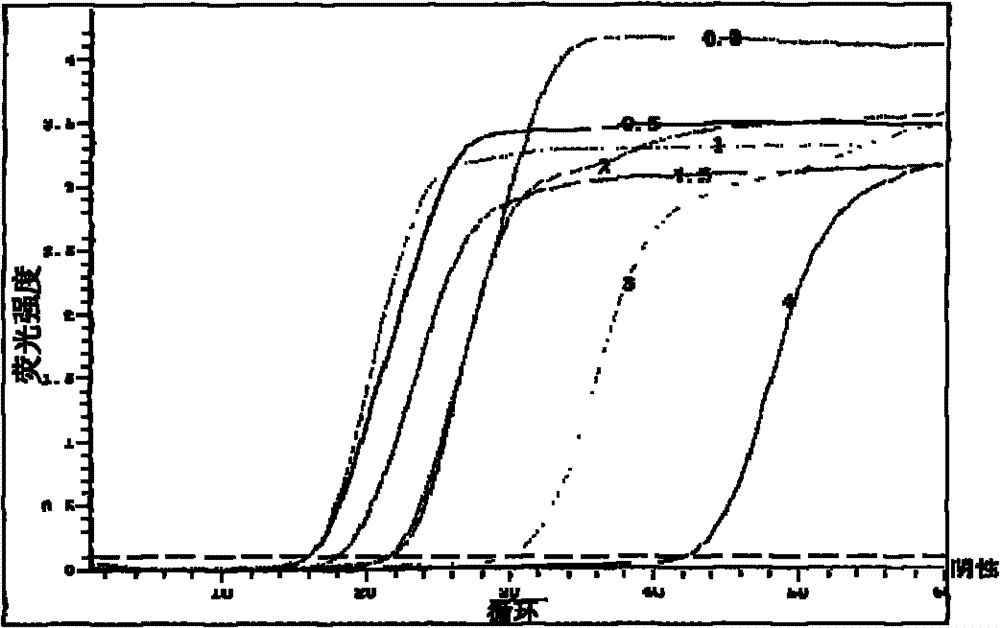Fluorescent quantitative loop-mediated isothermal amplification (LAMP) detection method for bovine tuberculosis pathogene
A fluorescence quantitative and tuberculosis technology, applied in the direction of fluorescence/phosphorescence, microbial measurement/inspection, biochemical equipment and methods, etc., can solve the problems of expensive reagents, long detection time, lack of specificity, etc., and achieve curative effect judgment and prognosis The effect of simple evaluation, various methods of judging results, and accurate analysis of results
- Summary
- Abstract
- Description
- Claims
- Application Information
AI Technical Summary
Problems solved by technology
Method used
Image
Examples
Embodiment 1
[0047] The construction of embodiment 1 standard plasmid
[0048] 1.1 Amplification of the target gene
[0049] Using the Mycobacterium bovis genomic DNA as a template and using SEQ ID No.7 and SEQ ID No.8 as primers, the target fragment of the IS1081 sequence is amplified. Add the following reagents to a 0.2ml PCR tube:
[0050] Table 2 Common PCR reaction system (50μL)
[0051]
[0052] After mixing, put it into a PCR amplification instrument and perform amplification according to the following procedures:
[0053] The cycle parameters of IS1081 sequence amplification were: pre-denaturation at 95°C for 5 min; denaturation at 95°C for 1 min, annealing at 60.8°C for 1 min, extension at 72°C for 1 min, 35 cycles; extension at 72°C for 10 min.
[0054] After the reaction, the fragment size of the product was identified by 0.8% agarose gel electrophoresis. Compared with the DNA Marker, if it was consistent with the target fragment size defined by the primers, subsequent exp...
Embodiment 2
[0102] Copy number=plasmid concentration (g / μl)×injection volume×Arbeck’s constant / (total plasmid length×average molecular weight of one base pair), and finally the plasmid was diluted 10 times with Tris-Hcl (10mM). By calculating the copy number of the plasmid extracted by the present invention is 2.76×10 10 copy, according to the copy number, the plasmid was diluted to 1×10 10 copy / μL, and then perform a 10-fold dilution. The establishment of embodiment 2 bovine tuberculosis pathogen LAMP method
[0103] Take 1 μL of the positive plasmid DNA extracted in Example 1 as a template, configure the reaction system according to the following system, and replace the plasmid DNA template with sterile water as a negative control. When the concentration of one of the components is optimized, the other components remain unchanged, and the volume of the changed component can be equilibrated with double distilled water.
[0104] Table 4 Fluorescence quantitative LAMP reaction system (2...
Embodiment 3
[0162] The DNA extracted from 24 bovine tuberculosis positive blood samples was detected by the established fluorescent quantitative LAMP method according to the established method in Example 2. The result is as Figure 13 shown. The results showed that the positive rate was 100%, consistent with the expected effect. prove the feasibility of this method.
PUM
 Login to View More
Login to View More Abstract
Description
Claims
Application Information
 Login to View More
Login to View More - R&D
- Intellectual Property
- Life Sciences
- Materials
- Tech Scout
- Unparalleled Data Quality
- Higher Quality Content
- 60% Fewer Hallucinations
Browse by: Latest US Patents, China's latest patents, Technical Efficacy Thesaurus, Application Domain, Technology Topic, Popular Technical Reports.
© 2025 PatSnap. All rights reserved.Legal|Privacy policy|Modern Slavery Act Transparency Statement|Sitemap|About US| Contact US: help@patsnap.com



